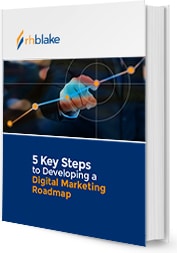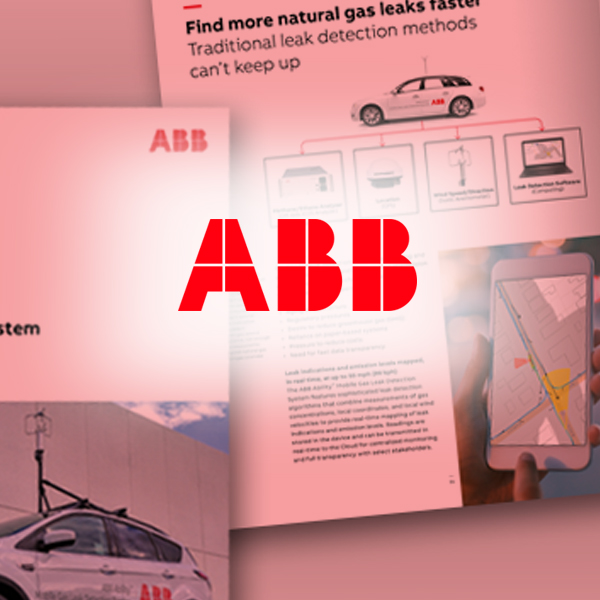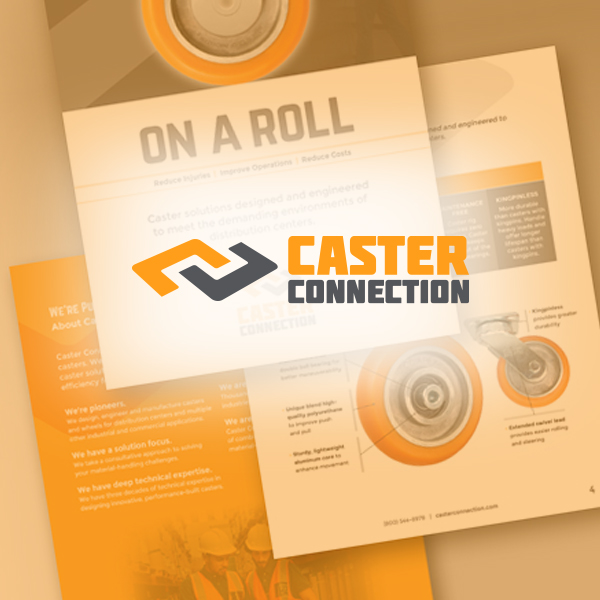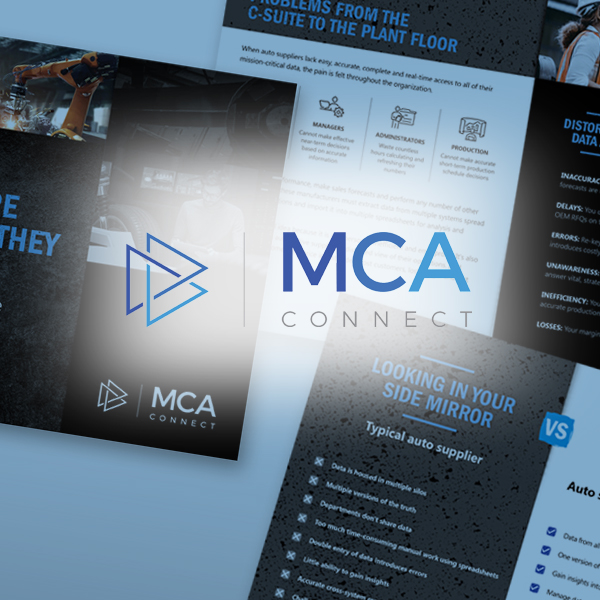Estimating the ROI on new investments is one of the challenges in building a business case for new investment.
How Do You Estimate Market Size for Niche B2B Manufacturing Segments?
Estimating the ROI on new investments is one of the challenges in building a business case for new investment. Sizing the market potential is a part of that challenge and it is even more trying for companies operating in the B2B sector.

Besides estimating the potential value of introducing a new product or service to the market, B2B market sizing can play a significant role in many business decisions:
- Evaluating the impact of introducing your current product or services to a new geography or market segment.
- Determining which product/service to invest development resources.
- Prioritizing market segments to target.
- Assessing staffing needs for a given segment.
- Evaluating a partnership or acquisition opportunity.
Estimating market size for a niche B2B segment can be difficult due to several reasons:
- Limited data availability: Niche B2B segments often have limited data available in terms of market research, reports, and public information, and the data available tends to be vague and not specific to the solution they are proposing. This lack of data makes it challenging to gather comprehensive insights and accurately estimate the market size.
- Fragmented market: Niche B2B segments can be fragmented, with a large number of small players serving specific sub-segments. This fragmentation makes it challenging to identify and collect data on all the players operating within the market, resulting in an incomplete picture of the overall market size. Usually, a B2B transaction is for a product/service that will become a component of the purchasing party’s product, which in its turn, could be a part of yet another product. It takes an insider’s knowledge to pull the puzzle together to estimate how large a market can be.
- Complexity and uniqueness: Niche B2B segments often involve complex products, services, or solutions tailored to specific industry needs. The uniqueness and customization of offerings make it difficult to apply standardized market research methods, further complicating the estimation of market size.
Based on the information we gathered from hundreds of VOC interviews, we concluded that these challenges are heightened by limited budgets allocated to market research and small research/marketing teams whose resources are already stretched and who cannot devote time to the longer-term projects like systematic research and analysis of new opportunities.
To overcome these difficulties, companies often have to rely on a combination of primary research, such as surveys and interviews with industry experts, analysis and compilation of existing customers’ information and extrapolation of total market volumes from it, competitive analysis, and secondary research from available reports, industry associations, and trade publications to get a better estimate of their market size.
There are three main approaches to this market research:
- Top-down – a bird’s eye view using published reports and macro data wherever possible.
- Supply side – a sum of the size of each competitor supplying the market.
- Bottom-up – referred to as “Demand side” assessment, in which the end-user data is combined with the numbers of players within a market to create a formula that leads to the market size.
A more effective strategy when estimating a market size involves triangulation of the information gathered through each of these methods. Comparing the results from all three approaches usually creates the best intelligent estimate of the total market potential. It is, in many ways, as much of an art as it is science, and can be thought of as a puzzle where it takes several different pieces to come together before a fuller picture emerges.
Let’s consider an example …
A niche player in the packaging space, Alto Corp. has a unique technology that allows for perfect amount of moisture to be retained in a package while not allowing any further water/vapor permeation inside the package for an adjustable period of time. Furthermore, the package has a biodegradable faculty with visible indicators of when the package is at the end of its life and needs to be discarded, making this package a sustainable alternative to plastic and perfect for many end-use applications. As such, they can dial up or down the length of the package life to correlate to the product’s expiration date.
Correlating the life of the package with the life of the product inside is what makes this technology unique.
Alto decided to target a small, less visible and more forgiving B2B segment of seasonings and condiment manufacturers supplying to the Food Service space. Their goal was to test the technology and make adjustments to the product before going after bigger and more visible segments.
To control the experiment, they selected a set of specific products that tend to clump when exposed to moisture: oregano, basil, coriander, mint, ginger, cardamom, and clove. Given the bulk size of the package (expected duration of product freshness is at least 1 year) and humid conditions in restaurant kitchens, it created the perfect environment to experiment with Alto’s new technology.
Before they introduced this product, they needed to invest some development money to produce enough Food-Service packages with the specific life span of 1 year. It would cost them $1 Million and at minimum, they would like to break-even. They estimated that they would need to sell at least 8 million units to break-even.
The question was: “What is the total market size?” Once they estimated the total market potential, they were confident they could convert 25% of the total market into their new technology.
Method 1 (Top-Down)
Alto reviewed reports available from Freedonia, Nielson, Mintel and IRi, and while they could identify revenue numbers associated with major spice and seasonings players, there was no breakdown by categories of channels. They joined the association for spice manufacturers that also could not provide any granular numbers for the industry. However, the team could gather information about the overall size of the spice and seasonings market, a fuller list of players and develop contacts in the industry who agreed to be interviewed. They learned that compared to the retail sector, the food service sector was relatively small but growing by 2-3% faster than the retail sector. They also confirmed that their technology would be of interest and signed up a few companies for their market test.
Method 2 (Supply Side)
Alto’s market research group did not feel confident that the information from industry reports and ASTA (American Spice Trade Association) gave them an accurate representation of the Food Service category for the specific spices they were targeting. They needed a much more granular view to the annual sales numbers. They knew, however, that there were 3 competitors currently supplying Food Service type of packages to this market segment.
During one of the industry dinner events, one particular competitor (Boltun Package) disclosed that they sell 5 million of these packages to McCormick, but the other two competitors have a much bigger market share of bulk Food-service packages estimated at 70%, if combined.
At this time, we do not know what market share this particular competitor has, but we do know that they only have one facility of 150,000 sq feet, while the other two competitors have 6 facilities combined of total 600,000 sq feet. (150*.70)/600= 17.5% market share estimated for Boltun Package, making the total size of the market ~28 million units.
Method 3 (Down-Up)
Through conversations with the leading spice manufacturer and industry experts, Alto’s research group discovered that McCormick was supplying 15 million units a year and they knew that McCormick was the largest supplier of the product to the Food service category. They estimated their share to be 50%.
If McCormick has 50% of the market and they sell 15 million units, the total market is: 15 x 2 = 30 (million packages). Alto is confident that they can convert 25% of the market: 7.5 million units.
By triangulating all three inputs, Alto could build a business case for their initial investment confirming that they could at least break-even with their first launch and that there was enough interest in the market segment they were targeting to proceed with the first launch. The down-up and Supply-Side methods’ numbers correlated well and they had a good base to convince themselves and investors that their approach was solid.
In general, to overcome the lack of precise data to size a b2b niche market, companies utilize a more complex approach that requires making a set of assumptions based on the information received from top-down, supply-side and bottom-up methods of calculating market size. We recommend that the research team spells out all assumptions made during the process and cites all data sources allowing for adjustments if market conditions and circumstances change.
If utilized systemically, this approach usually brings a solid way of evaluating new opportunities, speeding up the analysis and increasing the velocity of new product introductions.
Estimating the ROI on new investments is one of the challenges in building a business case for new investment.
How Do You Estimate Market Size for Niche B2B Manufacturing Segments?
Estimating the ROI on new investments is one of the challenges in building a business case for new investment. Sizing the market potential is a part of that challenge and it is even more trying for companies operating in the B2B sector.

Besides estimating the potential value of introducing a new product or service to the market, B2B market sizing can play a significant role in many business decisions:
- Evaluating the impact of introducing your current product or services to a new geography or market segment.
- Determining which product/service to invest development resources.
- Prioritizing market segments to target.
- Assessing staffing needs for a given segment.
- Evaluating a partnership or acquisition opportunity.
Estimating market size for a niche B2B segment can be difficult due to several reasons:
- Limited data availability: Niche B2B segments often have limited data available in terms of market research, reports, and public information, and the data available tends to be vague and not specific to the solution they are proposing. This lack of data makes it challenging to gather comprehensive insights and accurately estimate the market size.
- Fragmented market: Niche B2B segments can be fragmented, with a large number of small players serving specific sub-segments. This fragmentation makes it challenging to identify and collect data on all the players operating within the market, resulting in an incomplete picture of the overall market size. Usually, a B2B transaction is for a product/service that will become a component of the purchasing party’s product, which in its turn, could be a part of yet another product. It takes an insider’s knowledge to pull the puzzle together to estimate how large a market can be.
- Complexity and uniqueness: Niche B2B segments often involve complex products, services, or solutions tailored to specific industry needs. The uniqueness and customization of offerings make it difficult to apply standardized market research methods, further complicating the estimation of market size.
Based on the information we gathered from hundreds of VOC interviews, we concluded that these challenges are heightened by limited budgets allocated to market research and small research/marketing teams whose resources are already stretched and who cannot devote time to the longer-term projects like systematic research and analysis of new opportunities.
To overcome these difficulties, companies often have to rely on a combination of primary research, such as surveys and interviews with industry experts, analysis and compilation of existing customers’ information and extrapolation of total market volumes from it, competitive analysis, and secondary research from available reports, industry associations, and trade publications to get a better estimate of their market size.
There are three main approaches to this market research:
- Top-down – a bird’s eye view using published reports and macro data wherever possible.
- Supply side – a sum of the size of each competitor supplying the market.
- Bottom-up – referred to as “Demand side” assessment, in which the end-user data is combined with the numbers of players within a market to create a formula that leads to the market size.
A more effective strategy when estimating a market size involves triangulation of the information gathered through each of these methods. Comparing the results from all three approaches usually creates the best intelligent estimate of the total market potential. It is, in many ways, as much of an art as it is science, and can be thought of as a puzzle where it takes several different pieces to come together before a fuller picture emerges.
Let’s consider an example …
A niche player in the packaging space, Alto Corp. has a unique technology that allows for perfect amount of moisture to be retained in a package while not allowing any further water/vapor permeation inside the package for an adjustable period of time. Furthermore, the package has a biodegradable faculty with visible indicators of when the package is at the end of its life and needs to be discarded, making this package a sustainable alternative to plastic and perfect for many end-use applications. As such, they can dial up or down the length of the package life to correlate to the product’s expiration date.
Correlating the life of the package with the life of the product inside is what makes this technology unique.
Alto decided to target a small, less visible and more forgiving B2B segment of seasonings and condiment manufacturers supplying to the Food Service space. Their goal was to test the technology and make adjustments to the product before going after bigger and more visible segments.
To control the experiment, they selected a set of specific products that tend to clump when exposed to moisture: oregano, basil, coriander, mint, ginger, cardamom, and clove. Given the bulk size of the package (expected duration of product freshness is at least 1 year) and humid conditions in restaurant kitchens, it created the perfect environment to experiment with Alto’s new technology.
Before they introduced this product, they needed to invest some development money to produce enough Food-Service packages with the specific life span of 1 year. It would cost them $1 Million and at minimum, they would like to break-even. They estimated that they would need to sell at least 8 million units to break-even.
The question was: “What is the total market size?” Once they estimated the total market potential, they were confident they could convert 25% of the total market into their new technology.
Method 1 (Top-Down)
Alto reviewed reports available from Freedonia, Nielson, Mintel and IRi, and while they could identify revenue numbers associated with major spice and seasonings players, there was no breakdown by categories of channels. They joined the association for spice manufacturers that also could not provide any granular numbers for the industry. However, the team could gather information about the overall size of the spice and seasonings market, a fuller list of players and develop contacts in the industry who agreed to be interviewed. They learned that compared to the retail sector, the food service sector was relatively small but growing by 2-3% faster than the retail sector. They also confirmed that their technology would be of interest and signed up a few companies for their market test.
Method 2 (Supply Side)
Alto’s market research group did not feel confident that the information from industry reports and ASTA (American Spice Trade Association) gave them an accurate representation of the Food Service category for the specific spices they were targeting. They needed a much more granular view to the annual sales numbers. They knew, however, that there were 3 competitors currently supplying Food Service type of packages to this market segment.
During one of the industry dinner events, one particular competitor (Boltun Package) disclosed that they sell 5 million of these packages to McCormick, but the other two competitors have a much bigger market share of bulk Food-service packages estimated at 70%, if combined.
At this time, we do not know what market share this particular competitor has, but we do know that they only have one facility of 150,000 sq feet, while the other two competitors have 6 facilities combined of total 600,000 sq feet. (150*.70)/600= 17.5% market share estimated for Boltun Package, making the total size of the market ~28 million units.
Method 3 (Down-Up)
Through conversations with the leading spice manufacturer and industry experts, Alto’s research group discovered that McCormick was supplying 15 million units a year and they knew that McCormick was the largest supplier of the product to the Food service category. They estimated their share to be 50%.
If McCormick has 50% of the market and they sell 15 million units, the total market is: 15 x 2 = 30 (million packages). Alto is confident that they can convert 25% of the market: 7.5 million units.
By triangulating all three inputs, Alto could build a business case for their initial investment confirming that they could at least break-even with their first launch and that there was enough interest in the market segment they were targeting to proceed with the first launch. The down-up and Supply-Side methods’ numbers correlated well and they had a good base to convince themselves and investors that their approach was solid.
In general, to overcome the lack of precise data to size a b2b niche market, companies utilize a more complex approach that requires making a set of assumptions based on the information received from top-down, supply-side and bottom-up methods of calculating market size. We recommend that the research team spells out all assumptions made during the process and cites all data sources allowing for adjustments if market conditions and circumstances change.
If utilized systemically, this approach usually brings a solid way of evaluating new opportunities, speeding up the analysis and increasing the velocity of new product introductions.

"You guys met our expectations in every way. It [RH Blake Market Research] was the information we were looking for. Congratulations and Thank You!"
 Scott Griggs
Scott Griggs
Director of Services for Food Manufacturing and Food Service
ALS Global

"“I’ve gotten all that I’d hoped for from the RH Blake Growth Roadmap™ and more. Based on the research and insights, we adjusted our offering scope and sales approach. And this adjustment has been effective at generating new opportunities."
 Diane Reko
Diane Reko
President
REKO International

"RH Blake has been an outstanding partner. They deliver creativity, on time, and always so professional. We love working with them because of their perspective, support, and their efficiency in turning projects around quickly."
 Samantha Spano
Samantha Spano
Digital Product Marketing & Communications Manager
Industrial Automation Energy Industries
ABB
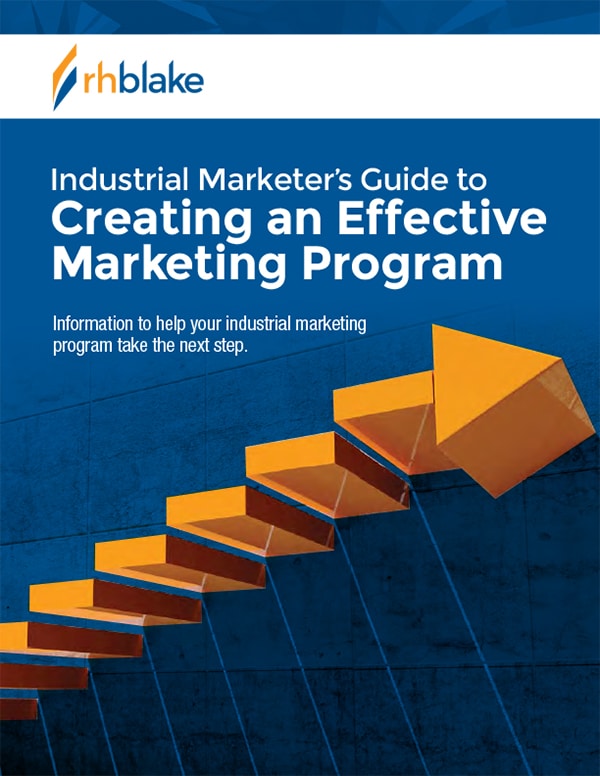
Industrial Marketer’s Guide to Creating an Effective Marketing Program
147 pages of actionable ideas to help you create a winning marketing strategy and program

Industrial Marketer’s Guide to Creating an Effective Marketing Program
147 pages of actionable ideas to help you create a winning marketing strategy and program
Related Clients


